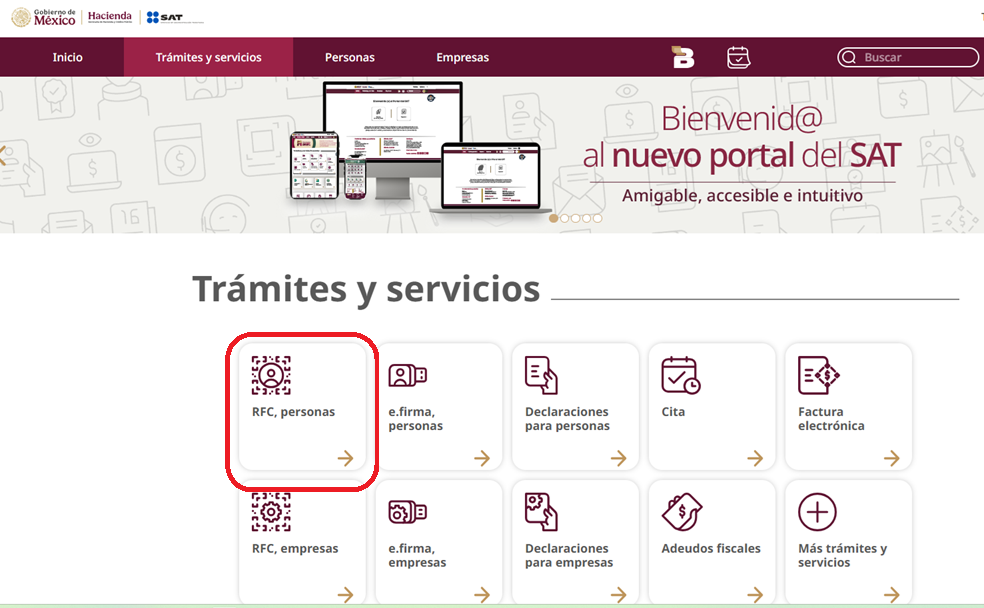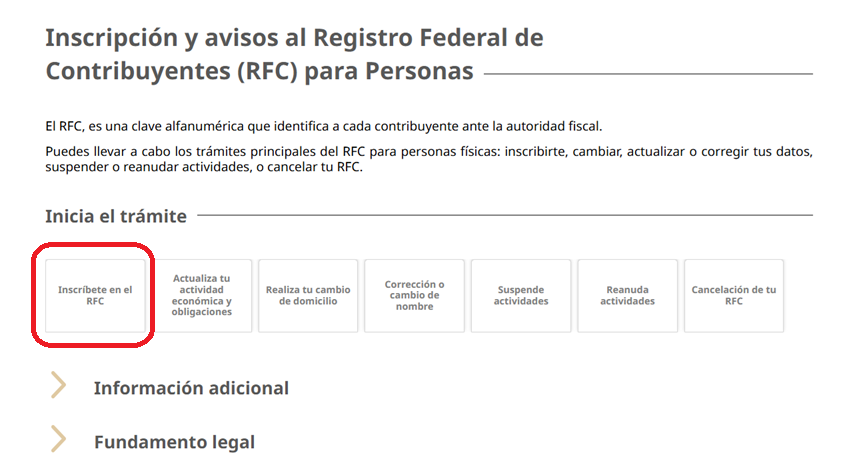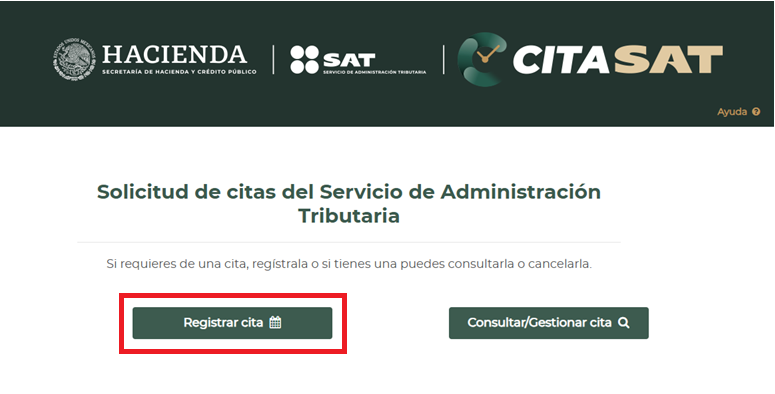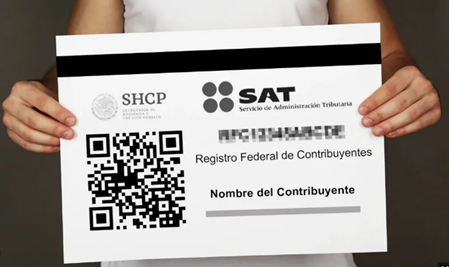I’m super thrilled to share that foreign residents (and Mexican citizens) can now apply for an RFC number online and save themselves a trip to their local SAT office.
For readers who are unfamiliar, RFC is the acronym for “Registro Federal de Contribuyentes” which translates to “Federal Taxpayer Registry” in English.
SAT is the federal tax agency in Mexico equivalent to the IRS in the U.S. or the CRA in Canada. This bureaucracy is responsible for issuing RFC numbers, the unique ID used to keep track of a person’s tax obligations and payments in Mexico.
As a result of the 2022 tax reform law, all Mexican residents aged 18 and over must have an RFC number. Before 2022, many citizens who worked in the informal economy (roughly half of all Mexican workers) didn’t bother to get an RFC number or pay any taxes – resulting in a massive tax collection problem for the government.
Tax reform triggered a tidal wave of demand for RFC numbers from the SAT, resulting in long wait times, as they could only be obtained via in-person appointments at a SAT office.
Attempting to get an appointment on the SAT website felt like an inner circle of hell, requiring applicants to enter a “virtual line” and wait days for a response due to high demand. The process was rife with “gotchas” which resulted in some applicants getting barred from the appointment system for 30 days after making a mistake. It was not a good time.
Thankfully, you can now bypass the in-person process if you have an internet connection, some persistence, and solid Spanish skills (or at least a good translation app). Before we dive into how the new online process works, let’s examine why a foreign resident in Mexico might need an RFC number in the first place.
Why Should a Foreign Resident Get a RFC Number?
While non-citizen residents may technically be required to have an RFC number under the new law, there is minimal risk of being caught or fined if you don’t get one, assuming you do not work in Mexico.
That said, numerous practical everyday tasks cannot be completed in 2025 without an RFC number. Here are the most common instances where a foreign resident would need one:
- Opening a Mexican bank account
- Establishing new service with a utility like CFE (the electric company)
- Buying a new car
- Renting property to others on Airbnb
- Starting a local business
- Claiming a capital gains tax exemption when selling Mexican real estate
If you reside in Mexico for any length of time, it’s a good bet that you’ll need to do one or more of these activities at some point.
On the flip side, you cannot apply for an RFC number as a tourist. A temporary or permanent residence card is required to get one.
How to Get Your RFC Number Online
DISCLAIMER: As mentioned above, I got my RFC number in person back in 2023, so the guidance presented below is based on what SAT has shared about how their new online process works. As with everything in Mexico, your mileage may vary.
Step 1: Have a valid CURP number or Clave Única de Registro de Población
Everyone who is granted legal residency in Mexico is issued a CURP number. You can find it on your residence card.
To apply for the RFC your CURP number must be up to date. At the risk of stating the obvious, do not apply if you let it lapse and are no longer in Mexico legally.
If you need a refresher on how to get proof of your CURP number, check out my previous article on this topic. Simply sharing the CURP number printed on your residency card wasn’t adequate for the SAT when I applied in person — so it’s best to be prepared!
Step 2: Visit the SAT website and click on the card “RFC, personas”

Step 3: Click “Inscríbete en el RFC” on the left
Even though the “trámite” options are greyed out, they’re all clickable items. If you’re new to Mexican websites, I’m sorry to inform you that web designers here rarely use color or other visual cues to make interactive elements easy to recognize.

Step 4: Request a virtual appointment under the “En linea” section
This is done by clicking the nondescript “cita” link circled below. Mexican web designers don’t care much for standard blue text links either!

Step 5: Click the “Registrar cita” button on the left

Step 6: Choose Option 3 for “Inscripción al padrón de contribuyentes Personas Físicas”

Fill in all of the fields displayed above, then proceed through the steps to request an appointment. Once that is taken care of return to the page shown above in Step 4.
Step 7: Complete the Formato de inscripción a través de Oficina Virtual (FOV-I)
Clicking the form link in the En Linea section on this page loads an editable PDF form. Be sure to fill in all required fields following the instructions on page 2.
When you’ve completed the form, download it, save it, and print it. Then sign it (SAT prefers blue ink), scan it, and save it again.
Step 8: Get a “comprobante de domicilio” (proof of address)
This document is necessary only if your residency card does not show your current address.
Taking a digital photo of a utility bill (like your CFE electric bill) no more than 3 months old is the safest option if you need to provide proof of address. Do not worry if the bill is not in your name.
Final Online Steps to Get Your RFC Number
If you’ve done everything correctly, you’ll receive an appointment confirmation from this email address: avisocitas@sat.gob.mx.
At least a day prior to your appointment, email digital copies of the requested documents to oficina.virtual@sat.gob.mx.
When your appointment time arrives, enter the virtual session according to the instructions in the SAT email you received and (hopefully) complete the process to get your RFC number.
If you get tripped up anywhere, there are two ways to get help online:
By phone from anywhere inside Mexico dial 55 6272 2728.
If dialing from outside Mexico, use (+52) 55 6272 2728, option 5.
Online chat at http://chat.sat.gob.mx
Good luck and remember – learning to deal with Mexican bureaucracy is a rite of passage for new expats. When you finally succeed, treat yourself to a delicious taco and some tequila. You’ve earned it!


